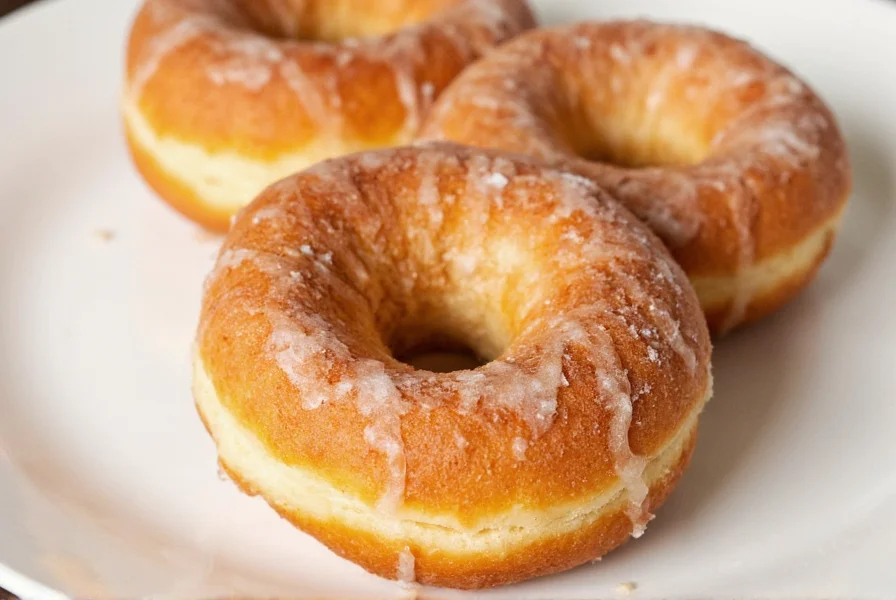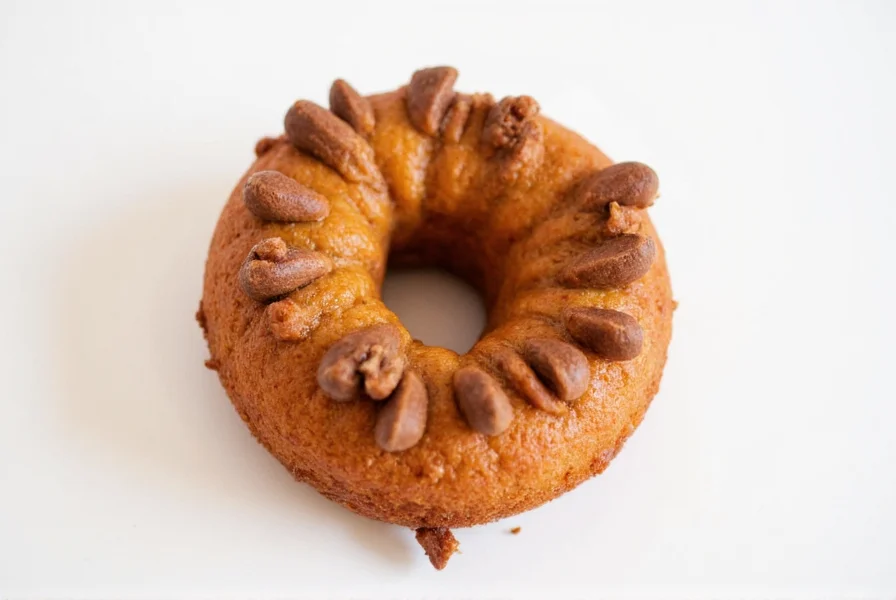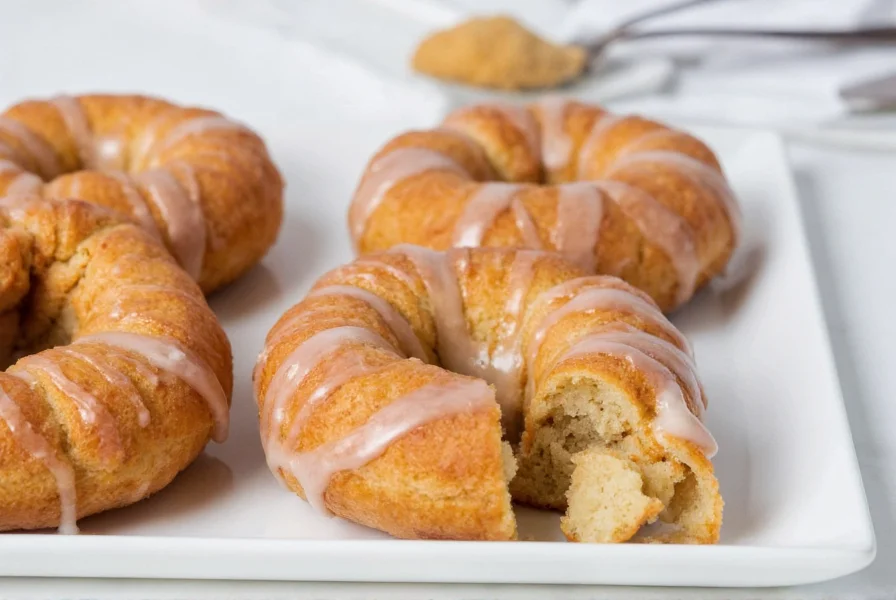Food enthusiasts seeking the perfect balance between donut convenience and cinnamon roll indulgence have embraced this creative hybrid. While traditional cinnamon rolls require lengthy proofing and baking, cinnamon bun donuts offer a faster preparation method through frying, while maintaining that beloved spiral of cinnamon goodness. This innovative pastry has gained popularity in specialty bakeries across North America, particularly in regions with strong Scandinavian baking traditions where cinnamon rolls already hold cultural significance.
What Sets Cinnamon Bun Donuts Apart
The fundamental difference between cinnamon bun donuts and their parent pastries lies in their preparation method and structural composition. Regular cinnamon buns undergo a baking process that creates a soft, cake-like texture throughout, while standard donuts achieve their characteristic lightness through deep frying. Cinnamon bun donuts preserve the spiral filling technique of cinnamon rolls but incorporate the yeast dough formulation and frying method of classic donuts.
| Pastry Type | Preparation Method | Texture Profile | Key Flavor Components |
|---|---|---|---|
| Traditional Cinnamon Roll | Baked | Soft, cake-like throughout | Buttery dough, dense cinnamon swirl, thick cream cheese icing |
| Classic Yeast Donut | Fried | Light, airy interior with crisp exterior | Subtle sweetness, fried dough flavor, simple glaze or sugar coating |
| Cinnamon Bun Donut | Fried with baked-like elements | Crisp exterior, tender layered interior | Rich cinnamon swirl throughout, absorbent dough for icing, fried dough base |
Essential Components of Authentic Cinnamon Bun Donuts
Creating an exceptional cinnamon bun donut requires attention to three critical elements that distinguish it from simpler donut varieties. The dough formulation needs sufficient structure to hold the spiral filling during frying without leaking, yet remain tender enough to absorb the signature icing. Professional bakers typically modify standard yeast donut recipes by incorporating slightly more fat and sugar to enhance flavor compatibility with the cinnamon filling.
The cinnamon filling represents the heart of this hybrid pastry. Unlike regular donuts that might feature a simple cinnamon sugar coating, authentic cinnamon bun donuts contain a substantial filling swirled throughout the dough before cutting and frying. This filling typically consists of softened butter, dark brown sugar, ground cinnamon, and often a touch of nutmeg or cardamom for complexity. The ratio of filling to dough proves crucial—too little and the pastry lacks distinctive character; too much and the filling leaks out during frying.
Finally, the icing deserves special consideration. While standard donuts might receive a simple sugar glaze, cinnamon bun donuts benefit from a cream cheese or vanilla icing with slightly higher viscosity. This thicker consistency allows the icing to cling to the textured surface created by the spiral filling, rather than sliding off the smoother surface of traditional donuts. The icing should complement rather than overwhelm the cinnamon flavor, creating a balanced sweet-spicy profile.
Professional-Grade Cinnamon Bun Donut Recipe
Creating restaurant-quality cinnamon bun donuts at home requires precise technique and ingredient ratios. This tested recipe yields twelve perfectly textured pastries with distinct cinnamon swirls and optimal icing absorption.

Dough Ingredients
- 3 1/2 cups all-purpose flour
- 1/4 cup granulated sugar
- 2 1/4 teaspoons active dry yeast
- 1/2 teaspoon salt
- 1/2 cup whole milk, warmed
- 1/4 cup water, warmed
- 1 large egg
- 3 tablespoons unsalted butter, melted
Cinnamon Filling
- 6 tablespoons unsalted butter, softened
- 1/2 cup dark brown sugar, packed
- 2 tablespoons ground cinnamon
- 1/4 teaspoon ground nutmeg (optional)
Cream Cheese Icing
- 4 ounces cream cheese, softened
- 1/4 cup unsalted butter, softened
- 1 1/2 cups powdered sugar
- 1/4 teaspoon vanilla extract
- 1-2 tablespoons milk
Preparation Method
- Dough preparation: Combine flour, sugar, yeast, and salt in a stand mixer bowl. Warm milk and water to 110°F (43°C), then mix with egg and melted butter. Gradually add liquid to dry ingredients while mixing with dough hook.
- First rise: Knead for 5-7 minutes until smooth and elastic. Place in greased bowl, cover, and let rise in warm place for 1-1.5 hours or until doubled.
- Rolling and filling: Roll risen dough into 12x16 inch rectangle. Spread softened butter evenly over surface, then sprinkle with brown sugar, cinnamon, and nutmeg mixture. Roll tightly from long side and pinch seam to seal.
- Shaping: Cut roll into 12 equal slices. Place cut-side down on parchment-lined baking sheet, cover, and let rise 30 minutes while heating oil to 350°F (175°C).
- Frying: Fry donuts 2-3 at a time for 1-1.5 minutes per side until golden brown. Drain on wire rack set over paper towels.
- Icing application: Whisk icing ingredients until smooth. Dip warm donuts into icing, allowing excess to drip off. Place on wire rack to set.
Proven Techniques for Perfect Results
Professional bakers employ several specialized techniques when preparing cinnamon bun donuts that home cooks can easily adopt. Temperature control proves critical at multiple stages—yeast dough requires precise warmth for optimal rise without killing the yeast, while frying demands consistent oil temperature to prevent greasy results. Many artisanal bakeries use a thermometer to maintain oil at exactly 350°F (175°C), adjusting heat as needed between batches.
The filling application method significantly impacts final quality. Rather than simply sprinkling cinnamon sugar, professionals create a uniform butter layer first, which acts as adhesive for the filling. This prevents the sugar mixture from sliding off during rolling and ensures even distribution throughout the spiral. For enhanced flavor complexity, some bakers incorporate a tablespoon of molasses into the filling, which complements the dark brown sugar and creates a richer caramel note when fried.
Timing the icing application represents another professional secret. The ideal window occurs when donuts have cooled slightly from frying (about 5 minutes) but remain warm enough for the icing to partially melt and seep into the crevices of the spiral. This creates that signature marbled appearance where icing penetrates the layers while maintaining a glossy top surface.

Regional Variations and Creative Adaptations
As cinnamon bun donuts have gained popularity, regional variations have emerged reflecting local tastes and culinary traditions. In the Pacific Northwest, where Scandinavian heritage influences baking culture, many bakeries incorporate cardamom into the cinnamon filling for authentic Nordic flavor. Midwest establishments often feature a streusel topping in addition to the standard icing, creating a delightful textural contrast.
Creative adaptations include savory-sweet versions with a pinch of sea salt in the icing, or even bacon-infused variations where crisped bacon bits get incorporated into the filling. For those seeking a modern twist, some specialty shops offer matcha-glazed cinnamon bun donuts or incorporate bourbon into the cream cheese icing for adult-oriented flavor profiles.
Finding Exceptional Cinnamon Bun Donuts
While making cinnamon bun donuts at home yields satisfying results, certain bakeries have perfected this hybrid pastry to notable acclaim. In Seattle, Cupcake Royale has gained regional fame for their cinnamon roll donuts featuring house-made cinnamon sugar and a particularly generous filling-to-dough ratio. Minneapolis-based Glam Doll Donuts offers a seasonal cinnamon bun donut that incorporates local honey into the glaze.
For those unable to visit specialty bakeries, frozen cinnamon bun donut kits have become increasingly available through premium grocery chains. These kits typically include pre-portioned dough and filling packets, requiring only the final proofing, frying, and icing steps at home. When selecting commercial versions, look for products listing real butter and quality cinnamon in the ingredients rather than artificial flavors.
Conclusion: The Enduring Appeal of This Hybrid Pastry
The cinnamon bun donut's popularity stems from its successful fusion of two beloved pastries while addressing practical concerns of both. It offers the rich flavor complexity of cinnamon rolls with the faster preparation time of fried donuts, creating a treat that satisfies nostalgic cravings while fitting modern lifestyles. As baking techniques continue to evolve, we can expect further innovations in this hybrid category, potentially including gluten-free versions, vegan adaptations using plant-based butters, and even international flavor variations that incorporate local spices and sweetening agents.
Frequently Asked Questions
Can I bake cinnamon bun donuts instead of frying them?
Yes, you can bake cinnamon bun donuts for a lighter version, though the texture will differ significantly from traditional fried versions. To bake, place shaped donuts on a parchment-lined baking sheet, cover, and let rise until puffy (about 30 minutes). Bake at 350°F (175°C) for 10-12 minutes until golden. The baked version will have a cake-like texture more similar to traditional cinnamon rolls than the crisp exterior of fried donuts.
Why does my cinnamon filling leak out during frying?
Filling leakage typically occurs when the dough hasn't been sealed properly after rolling or when too much filling has been applied. Ensure you pinch the seam firmly when rolling the dough rectangle, and use the recommended 1/2 cup of filling for a standard recipe. Chilling the cut donuts for 15 minutes before frying can also help set the filling and prevent excessive leakage.
How do I store leftover cinnamon bun donuts?
Store unfilled donuts in an airtight container at room temperature for up to 2 days. For filled and iced donuts, place them in a single layer with parchment paper between layers to prevent sticking. They're best consumed within 24 hours for optimal texture. To refresh stale donuts, warm them in a 300°F (150°C) oven for 5-7 minutes before reapplying a light glaze.
What's the difference between a cinnamon roll donut and a regular cinnamon donut?
A regular cinnamon donut typically features a simple cinnamon-sugar coating applied after frying, while a cinnamon roll donut (or cinnamon bun donut) contains an actual spiral of cinnamon filling throughout the dough before frying, mimicking the structure of traditional cinnamon rolls. The roll-style donut also usually features a cream cheese or vanilla icing rather than just a cinnamon sugar coating.
Can I make cinnamon bun donuts without yeast?
While traditional cinnamon bun donuts use yeast-raised dough, you can create a quick bread version using baking powder or baking soda as the leavening agent. However, this changes the fundamental character of the pastry, resulting in a cake donut texture rather than the light, airy quality of yeast donuts. The spiral filling technique still works with cake donut batter, but the final product will resemble a cinnamon roll-flavored cake donut rather than the hybrid pastry described in this guide.











 浙公网安备
33010002000092号
浙公网安备
33010002000092号 浙B2-20120091-4
浙B2-20120091-4